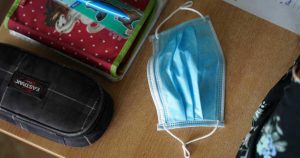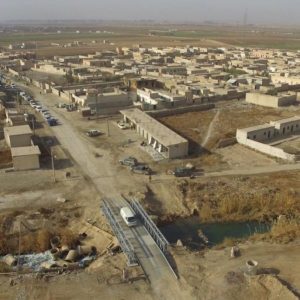There’s COVID-19 trouble in paradise.
Four weeks ago, Hawaii had a total of 1,688 confirmed coronavirus cases since the start of the pandemic and was reporting an average of 45 new cases per day, according to an NBC News analysis.
Since then, the total number of COVID-19 cases has reached 6,700 and public health officials are now reporting around 200 new cases per day. During this time, the death toll has also nearly doubled, jumping from 26 to 49, the figures show.
Hawaii is the latest state to see increases in cases; the Southern and the Sun Belt states have been experiencing an explosion of new cases and deaths in recent months following many reopening in May at the urging of President Donald Trump just as the pandemic was picking up steam in those areas.
The death toll in the United States climbed to more than 180,000 Wednesday and the number of confirmed cases was fast approaching 6 million, according to the latest NBC News figures. Both are world-leading numbers.
While Hawaii’s numbers are low compared to the rest of the U.S., they have set off alarm bells and Gov. David Ige, a Democrat, has given the green light to a second “stay-at-home, work-from-home” order for the island of Oahu. It begins at 12:01 a.m. Thursday and will remain in effect for two weeks.
“In March and April, we were successful in flattening the curve,” Ige said at a press conference Tuesday, where he was joined by Honolulu Mayor Kirk Caldwell, who is also a Democrat, and U.S. Surgeon General Jerome Adams. “We need to get that back under control.”
“This will be different from the last time,” Caldwell said. “We’re going to reset what we’re doing.”
So for the next two weeks, Hawaii public health workers will ratchet up the testing on Oahu, the state’s most populous island, and in the state’s biggest city, Honolulu, and hire between 250 and 500 contact tracers.
They have also booked an entire hotel Friday “with hundreds of rooms” where people who test positive, or have been in contact with people who’ve tested positive, will be quarantined away from their families and friends, Caldwell said.
“We’re going to see how it goes,” he said. “We’re hopeful that the number of cases will decline … If it doesn’t, we’ll look to continue it.”
The biggest outbreaks, Caldwell said, have been in the Pacific Islander and Filipino communities.
Adams said Hawaii has seen a leveling off in new cases but remains “at a turning point” and things could get bad “really quickly.”
“There is good news, most of you are doing the right thing,” he said. “Unfortunately, all it takes is one large gathering, one party, one group of individuals going to a bar to undo a lot of the progress and a lot of the work that the rest of the people across Hawaii are putting in to stop this virus.”
Jessica Yamauchi, who heads the nonprofit Hawaii Public Health Institute, applauded the governor’s move and noted that her state currently has an alarming 9.3 percent positivity rate. By comparison, New York state — once the nation’s hot spot — has had a positivity rate of less than 1 percent for 19 straight days, Gov. Andrew Cuomo reported Wednesday.
“While we are still waiting to review the latest emergency orders, we believe that additional restrictions were needed to lower our positivity rate and reduce transmissions in the community,” Yamauchi said. “We believe that the positivity rate should be used as a key metric to guide the state’s decisions on when to tighten or loosen restrictions on businesses, public services and institutions. The additional 5,000 tests per day over the next two weeks will also provide critical data needed to determine the best way to reduce community spread.”
U.S. deaths and cases account for a little over a fifth of the world’s more than 821,000 fatalities and about a quarter of the nearly 24 million confirmed cases across the globe.
In other coronavirus news:
- More than 100 new COVID-19 cases have been linked to the massive Sturgis Motorcycle Rally held earlier this month in South Dakota. Thousands of bikers attended the rally and neglected to socially distance or wear masks. The cases linked to the rally have been found in South Dakota, Minnesota and six other states. Several people have been hospitalized. “We’re expecting that we’re going to see many more cases associated with Sturgis,” Kris Ehresmann, the director of the Minnesota Health Department’s infectious disease division, said. “Thousands of people attended that event, and so it’s very likely that we will see more transmission.” South Dakota Gov. Kristi Noem, a Republican and a staunch Trump supporter, said earlier that her state was proud to host the annual rally. NBC News has reached out to her spokesman for comment about the rise in rally-related coronavirus cases.
- While thousands of public and private school teachers across the country are pushing back against attempts by local governments to restart in-classroom education, Vice President Mike Pence’s wife, Karen Pence, said she is “excited” about going back to her job as an art teacher at the private Immanuel Christian School in Springfield, Virginia. “We are 100 percent kids at school, and we have ways that we can take precautions, and the CDC has made that very clear to us,” she said on Fox News. “My school has spent the entire summer working on ways to make the school safer.” Pence said she won’t be teaching in an art room; instead “I’m taking a cart, room to room, because we don’t want the kids congregating in the hallways.” Both she and the vice president are expected to speak at the virtual Republican National Convention later Wednesday.
- Chicago White Sox ace Lucas Giolito became the first pitcher to throw a no-hitter in this pandemic-affected baseball season when he blanked the Pittsburgh Pirates on Tuesday. And there was nobody in the stands at Guaranteed Rate Field to watch it happen, unless you count the cardboard cutouts that 1,500 fans purchased of themselves to “sit” in the seats during White Sox home games.
Joe Murphy contributed.



















